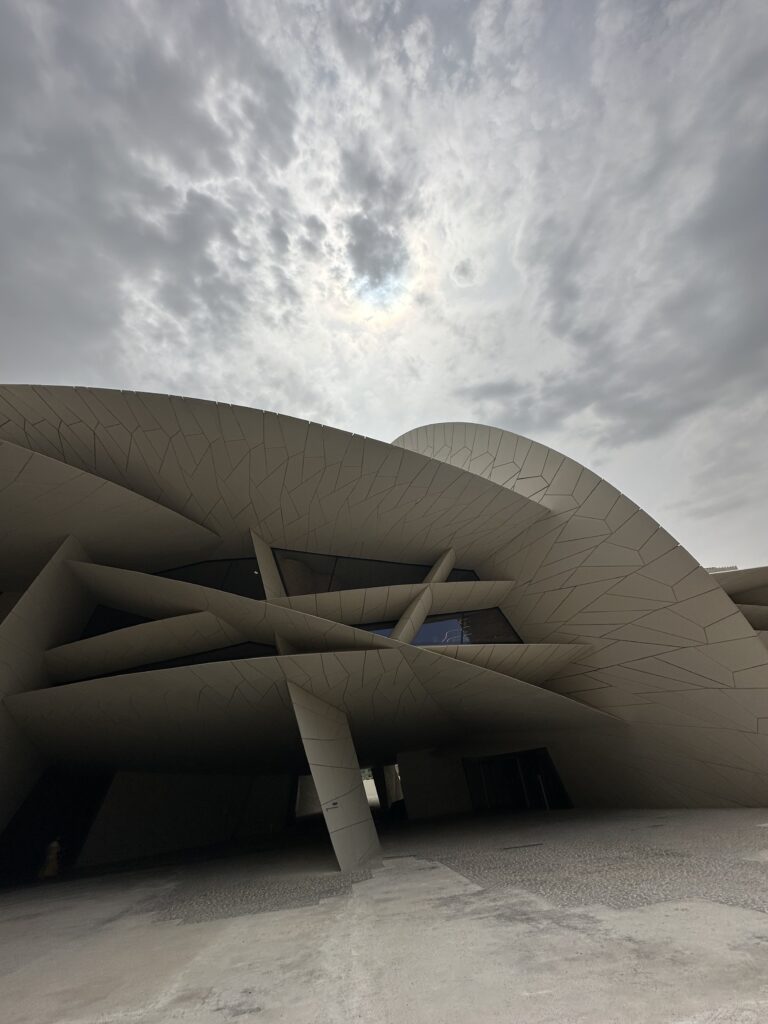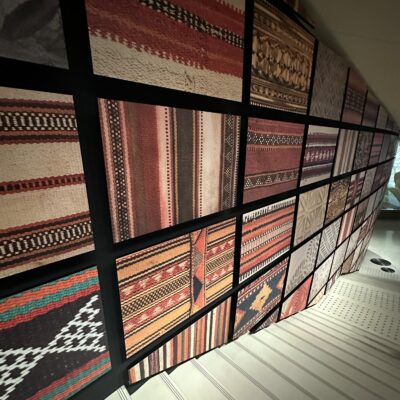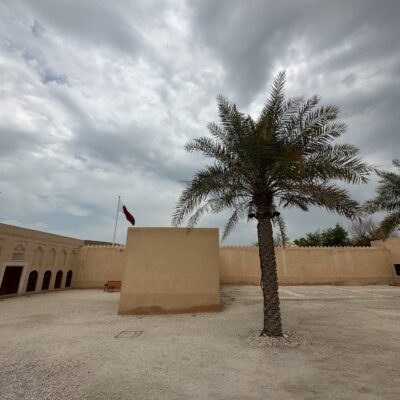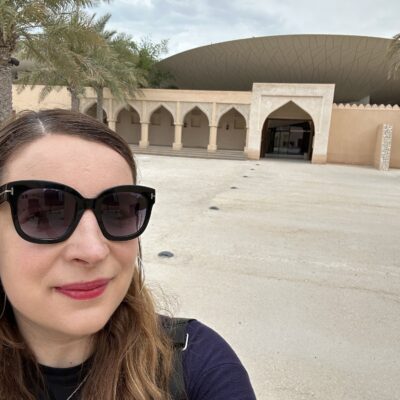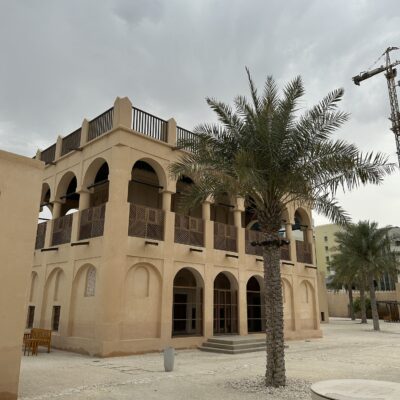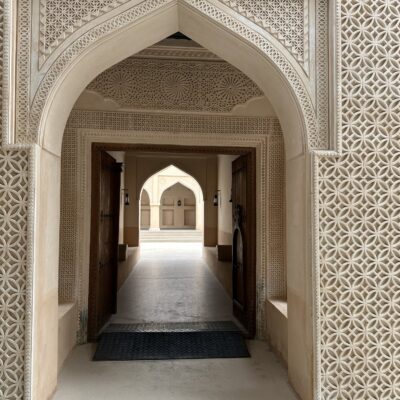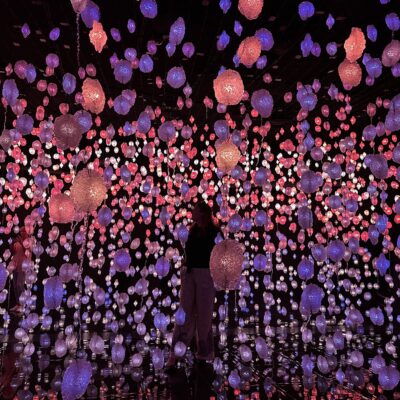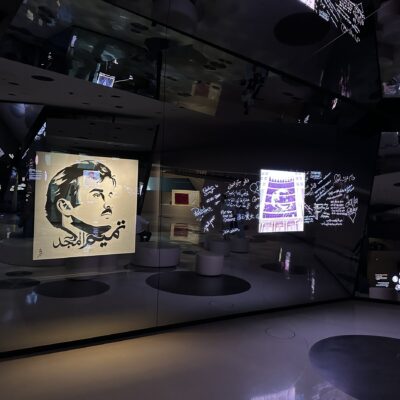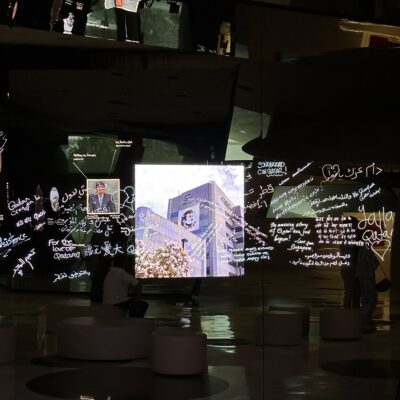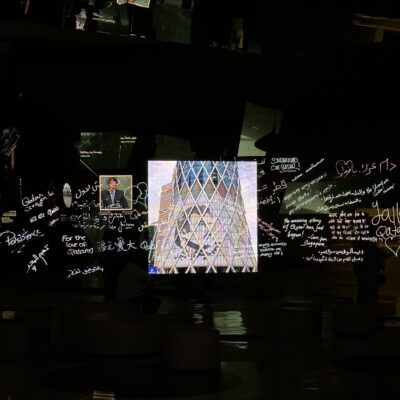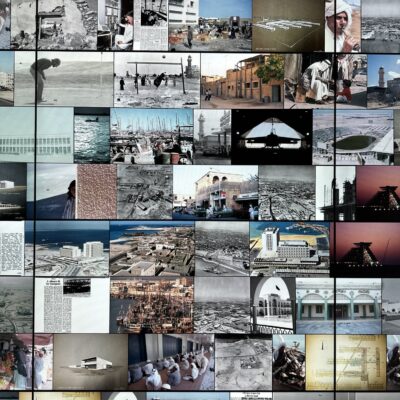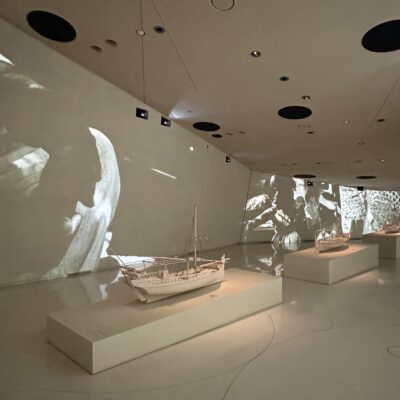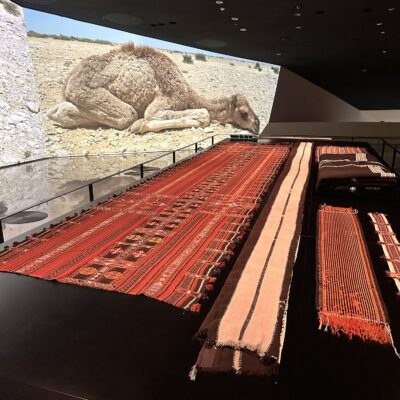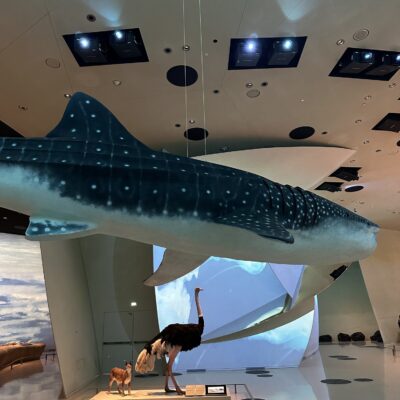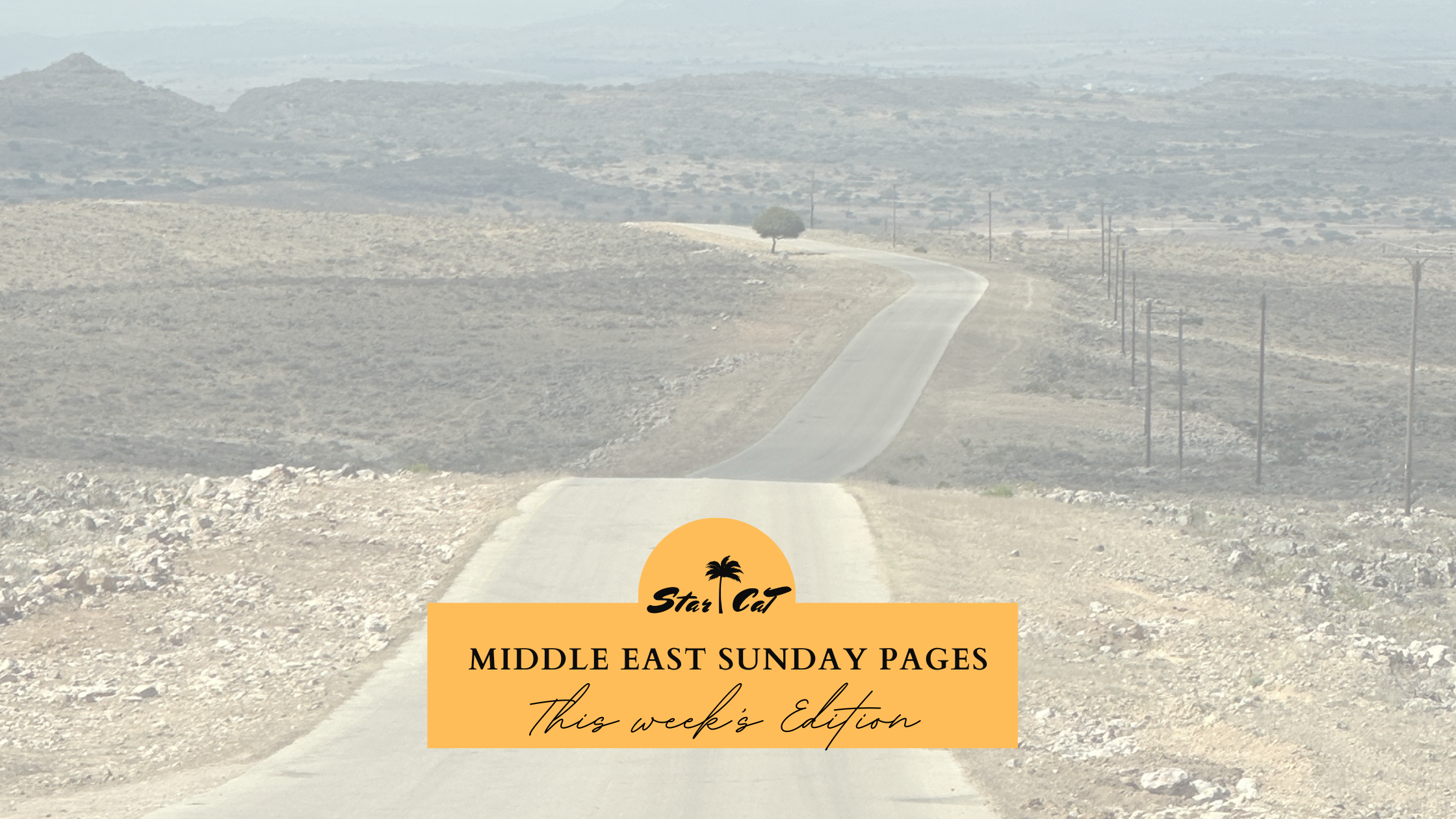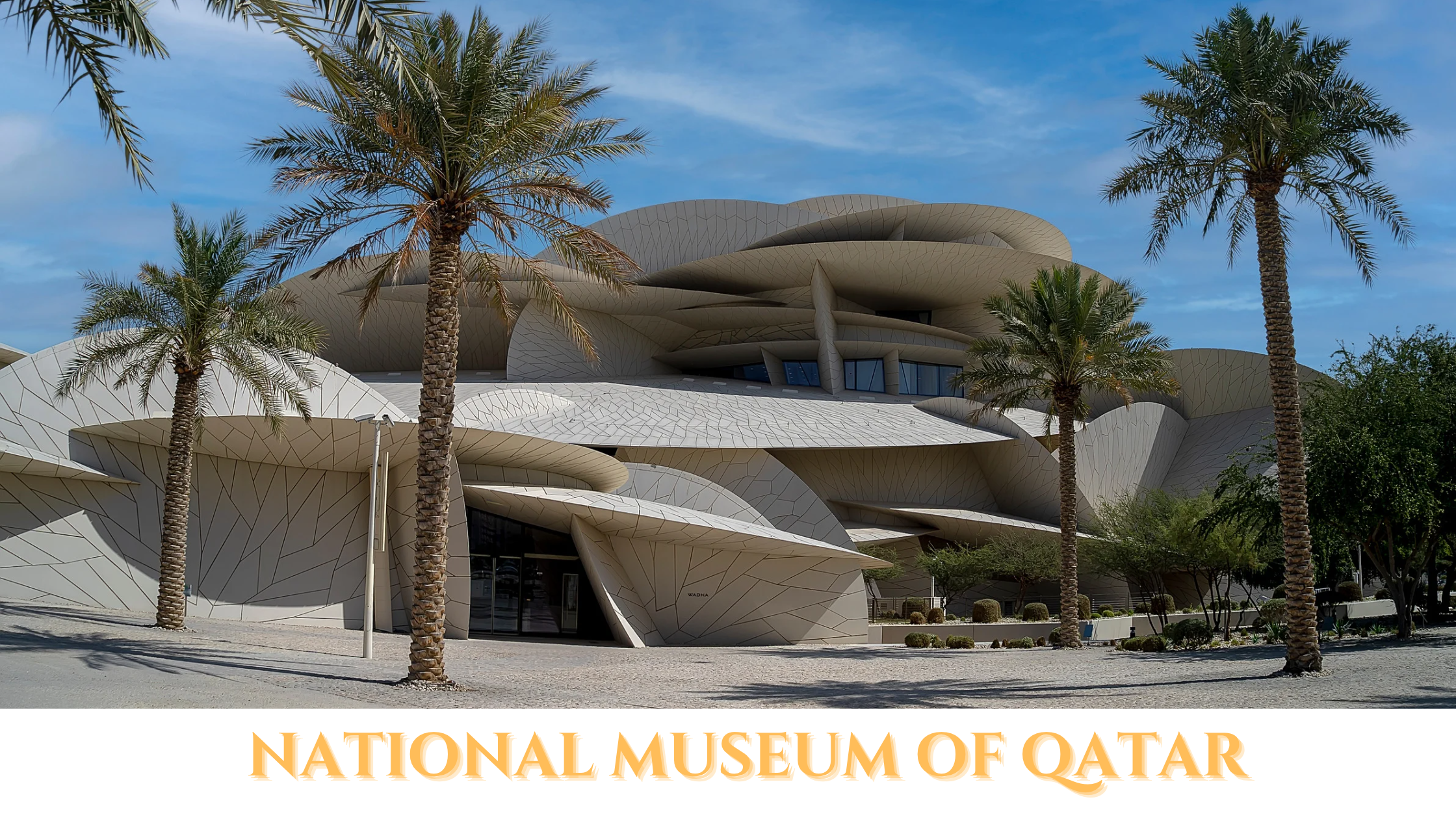
National Museum of Qatar
The National Museum of Qatar stands as a cultural beacon, celebrating the rich heritage, history, and traditions of Qatar. Situated in Doha, this architectural masterpiece captures the essence of the nation, offering visitors an immersive experience that takes them on a captivating journey through time.
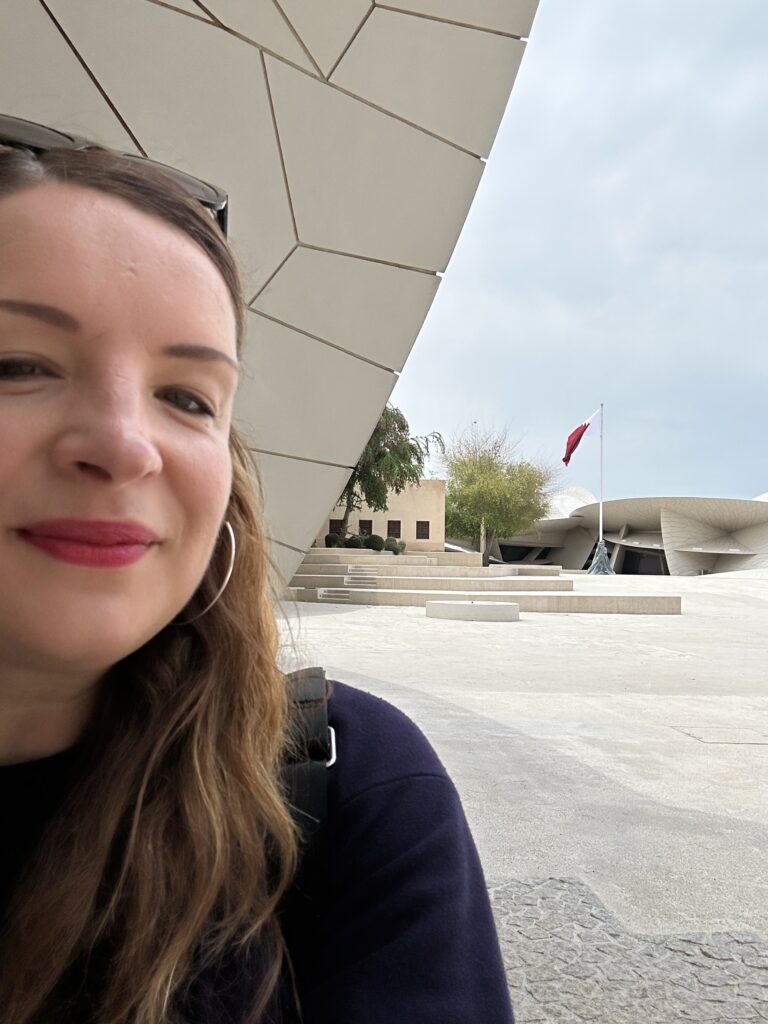
It was designed by by the renowned French architect Jean Nouvel and inspired by the Desert Rose. The architectural design of the National Museum of Qatar takes inspiration from the unique desert rose formations found in the Qatari desert.
The building’s exterior resembles the interlocking discs and crystalline patterns characteristic of these natural formations.
- Organic and Dynamic Architecture: The museum’s design is characterised by its organic and dynamic forms. The interlocking discs create a fluid and seamless structure, symbolising the continuous transformation of Qatar’s cultural and natural landscapes over time.
- A Geometric Masterpiece: The intricate geometric patterns and shapes featured in the design reflect the rich Islamic architectural traditions found throughout the region. The play of light and shadow on the building’s surface creates a visually striking effect, enhancing its overall aesthetic appeal.
- Sustainable Design: Sustainability was a crucial consideration in the design of the National Museum of Qatar. The discs that form the exterior act as a shading system, reducing heat gain and ensuring energy efficiency. The building also incorporates environmentally friendly features such as efficient insulation, solar panels, and a water recycling system.
- Natural Light and Illumination: The design of the museum prioritizes the use of natural light to illuminate the interior spaces. The strategically placed openings in the discs allow sunlight to filter through, creating a captivating interplay of light and shadow. This natural illumination not only enhances the visitor experience but also reduces the dependence on artificial lighting.
- Integration of Indoor and Outdoor Spaces: The design seamlessly integrates indoor and outdoor spaces, blurring the boundaries between the museum and its surroundings. The expansive outdoor areas, including the museum’s gardens, provide visitors with opportunities to connect with nature and appreciate Qatar’s unique environment.
- Cultural Symbolism: Every aspect of the design holds cultural symbolism. The museum’s shape represents the interconnectedness of different aspects of Qatari culture, history, and traditions. It reflects Qatar’s commitment to preserving its heritage while embracing the future.
- Visitor-Centric Approach: The design of the National Museum of Qatar prioritizes the visitor experience. The flow of spaces, the placement of exhibits, and the use of technology create an engaging and immersive journey for visitors, allowing them to explore Qatar’s history and culture in a dynamic and interactive manner.
- Iconic Landmark: The National Museum of Qatar has become an iconic landmark in Doha’s skyline. Its unique design has garnered international recognition and acclaim, solidifying its status as a cultural and architectural masterpiece.
